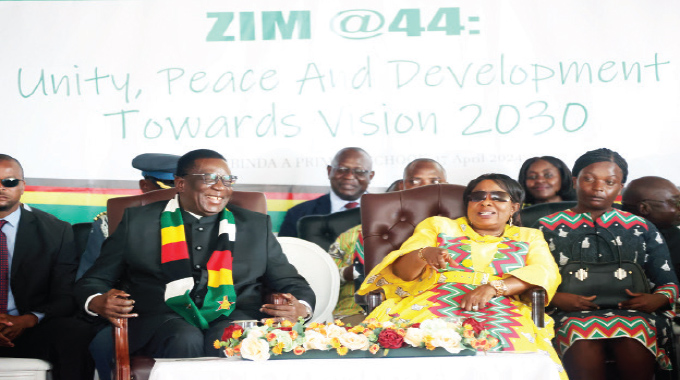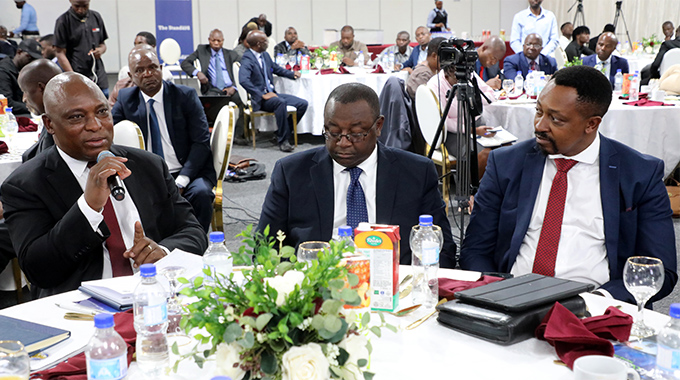PPPs critical to Zimbabwe’s increased milk production

ZIMBABWE is progressively moving towards self-sufficiency in raw milk production.
The Southern African nation of 16 million people has increased raw milk production from 79.6 million litres in 2021 to 91.6 million litres in 2022, a jump of 14.3 percent.
Imports of milk powder have also declined – from 8.9 million kg to 7.4 million kg over the same period. If the current milk production growth rate is maintained, Zimbabwe is confident of surpassing the national
milk target requirement of 150 million litres by 2025. The country requires 130 million litres of milk annually.
The country was once a net exporter of milk and dairy products, producing over 260 million litres per year at peak in the early 1990’s.
Zimbabwe Association of Dairy Farmers (ZADF) national chairperson, Ernest Muzorewa says this year Zimbabwe expects a 20 percent increase in milk production from 91 million litres in 2022, to about 108 million litres.
This success, according to Zimbabwe’s Ministry of Lands, Agriculture, Fisheries¸ Water and Rural Development permanent secretary, Dr John Basera, is due in part to synergies among the Zimbabwean government, the private sector and development partners.
The trio, through working together, have come up with policy and practical interventions that have not only generated farmer interest in the sector, but also confidence.
Basera told a local weekly newspaper: “The interventions are part of the country’s Livestock Recovery and Growth Plan, with a deliberate effort on increasing the national dairy herd from 19 000 in 2021 to 29 000 in 2022,” adding that this included the government’s private sector-funded dairy heifer programme.
Dairy farming is important to Zimbabwe’s economy. When the agricultural industry sneezes in the country, the whole economy catches the cold. Until the recent increase, smallholder dairy farmers produced about
three percent of the country’s milk production. Markets for milk are strong but production systems are generally inefficient, with growth coming from increases in the number of cows rather than in milk production per animal.
There are several challenges affecting the growth, viability and competitiveness of the dairy sector. These include low productivity, limited number of dairy animals and weak genetics in the dairy herd, high production and processing cost, limited access to affordable finance and foreign currency, high compliance cost and effects of
climate change.
To bridge this gap, dairy farmers must modernise by adopting proven technologies and management systems that will increase the quantity and quality of milk they produce.
One of the initiatives to grow the sector is the European-Union – funded Zimbabwe Agricultural Growth Programme. Under its portfolio, it supports the Transforming Zimbabwe’s Dairy Value Chain for the Future (TranZDVC) project. The project mobilised and registered more than 4,000 new dairy farmers between 2019 and 2022.
This scheme aims to address the root causes of under-performance in the dairy value chain by strengthening financing, production, processing and market linkages. The project works with over 4,800 dairy farmers
countrywide. These include small-scale, medium and large-scale dairy farmers. The overall objective of the project is to contribute to the development of a diversified and efficient dairy sector that promotes inclusive economic growth.
We Effect (a Swedish organisation, is the lead agency) is partnering the Zimbabwe Association of Dairy Farmers (ZADF), Zimbabwe Farmers Union (ZFU) and the Zimbabwe Dairy Industry Trust (ZDIT) in project implementation.
Esther Marwa, of Nharira area in Chikomba district in Mashonaland East province, is one of TranZDVC’s beneficiary farmers. Marwa was the overall winner of the 2021 Small-scale Dairy Farmer of the Year competitions. Her current production of 19 litres of milk per cow per
day supports the Government growth plan on rebuilding the dairy sector, strengthening and expanding the dairy rehabilitation programme.
Marwa took dairy farming as a family business in January 2019 with five in-calf Holstein heifers which she had bought from a large-scale dairy farmer. Currently, her total herd size is 31 dairy cows and four dairy bulls.
“I am currently milking 12 dairy cows (nine are in-calf), three are dry, eight heifers (will be mature to conceive by July), six weaners, two calves and four dairy bulls,” said Marwa.
“My highest milk producer gives me 25 litres of milk per day. The daily milk yield is about 150 litres,” she adds.
She plans to have a total milking herd of 100 and focus on improving calving rates and cow productivity.
“I want to be a breeder who will produce pure and cross breed dairy heifers at competitive prices to the local smallholder dairy farmers in Chikomba district.”
In rural communities, access to credit for investment in agriculture is an especially difficult, and sometimes onerous challenge. There are few affordable credit options for rural farmers with limited or no assets as
financial institutions see them as high-risk borrowers.
To increase dairy production and productivity, TransZDVC imported 500 in-calf heifers from South Africa between 2020 and 2021 and were distributed to 282 smallholder dairy farmers across Zimbabwe.
The dairy cows were distributed to different areas through a heifer matching grant facility led by three private companies- Dendairy, Nestle Zimbabwe (a
conglomerate with dairy interests in Zimbabwe) and ProDairy.
Participating farmers are already benefiting from improved family nutrition, employment and increased agricultural incomes from milk sales. The Jersey and Friesian breed distributed by the TranZDVC currently produce more than 25 litres per cow per day.
TranZDVC is promoting investment in dairy productive assets and infrastructure to ensure access to finance for dairy producers through a Matching Grants Facility. The Matching Grant Facility is limited to capital investments in productive assets such as machinery, equipment
and buildings and does not include finance for working capital and services. At least US$2,000,000 worth of grants have been disbursed to date, targeting large-scale farmers, processors and milk collection centres.
Many smallholder livestock farmers struggle with the high cost of feed, which can account for up to 70-80 per cent of raw milk production costs when feed is obtained from manufacturers or retail shops in Zimbabwe.
TranZDVC introduced nutrient-dense drought-tolerant forage crops and is promoting the production of maize:legume mixed crop silages to reduce
feed costs. Participating farmers were selected for livestock feed trials using diets based on velvet bean ((Mucuna pruriens), hyacinth bean (Lablab purpureus) and cowpea (Vigna unguiculata) to improve livestock feeding and nutrition. The farmers were also trained on how to produce hay and make home-based feeds. Over 1,500 farmers have benefitted.
A total of 1,338 farmers participated in the Presidential Sileage Programme. Sileage is a highly nutritious and affordable feed option, which the government is promoting under the own farm-feed formulation scheme, started in 2021.
With the artificial insemination technology that was put in place, factors such as inbreeding, and line breeding have been reduced and better gene pool have been introduced into the country. Capacity building support on dairy cows genetic improvement was also provided to government and other partners.
TranZDVC procured 4,000 straws of sexed semen and 4,000 straws of conventional dairy semen. Farmers can access this semen through Dairy Services and ZADF at US$22 per straw and US$5 per straw for sexed and conventional dairy semen respectively. Three hundred extension staff and farmers were trained in artificial insemination.
The project also worked with the Government to develop an electronic dairy database for efficiently recording and sharing accurate dairy data.
TranZDVC project coordinator, Edson Chifamba acknowledged the close collaboration between the government, We Effect, its partners, and private sector players in the economic growth of the dairy value chain
in Zimbabwe. “We are optimistic to be producing over 150 million litres per year from 2025,” he said.
Dairy sector stakeholders have also developed a Dairy Sector Strategic Plan (2021-2025) for improved performance of the dairy value chain in Zimbabwe.
-New Ziana










Comments